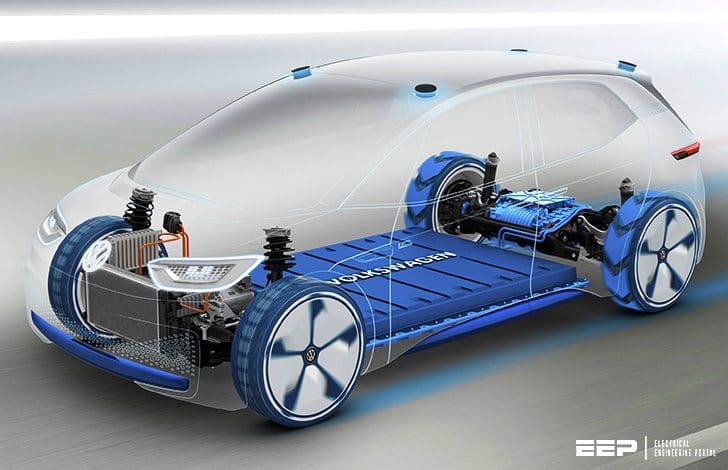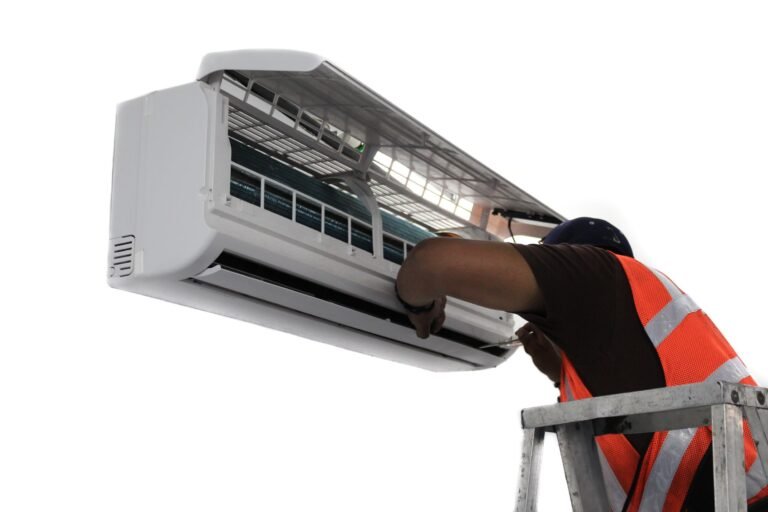How Air Conditioners Work in Cars: A Step-by-Step Guide
The air-conditioning system in a car works by manipulating refrigerant between a liquid and a gaseous state, absorbing heat and humidity from the vehicle and emitting cool, dry air. The process involves a compressor, condenser, evaporator, and a series of components that work together to provide a comfortable climate inside the car.
By understanding how air conditioners work in cars, drivers can maintain optimal use and ensure a pleasant driving experience. We will delve deeper into the functioning of car air-conditioning systems, providing insights into the key components and the step-by-step process involved in cooling the air.
Whether you’re interested in learning the basics or looking for tips and tricks to enhance the performance of your car’s AC system, this comprehensive guide will provide you with all the information you need.
Introduction To Car Air Conditioning Systems
Importance of air conditioning in carsThe air-conditioning system in a car works by manipulating refrigerant between a liquid and a gaseous state. As the refrigerant changes states, it absorbs heat and humidity from the vehicle and allows the system to give off cool, dry air. This is important for several reasons:
Understanding how car air conditioning systems work can help car owners maintain and troubleshoot their systems for optimal performance. |

Credit: electrical-engineering-portal.com
Components Of A Car Air Conditioning System
| Components of a Car Air Conditioning System |
| Overview of the major components |
|
Compressor: The compressor is responsible for pressurizing the refrigerant in the air conditioning system. It plays a crucial role in circulating the refrigerant and maintaining the proper pressure. Condenser: The condenser’s primary function is to release heat from the refrigerant. It helps convert the high-pressure gas refrigerant into a liquid state. Evaporator: The evaporator is located inside the car’s cabin and absorbs heat from the air. It allows the refrigerant to evaporate, cooling the surrounding air in the process. Expansion valve: The expansion valve controls the flow of refrigerant between the high-pressure and low-pressure sides of the system. It regulates the amount of refrigerant entering the evaporator, ensuring efficient cooling. |
Each component plays a crucial role in the functioning of a car air conditioning system. The compressor pressurizes the refrigerant, while the condenser releases heat from it. The evaporator absorbs heat from the air inside the cabin, while the expansion valve regulates the flow of refrigerant. Together, these components work to cool down the air inside the car, providing comfort to the passengers.
Step 1: Compressor
One of the key components of an air conditioning system in a car is the compressor. The compressor plays a crucial role in the cooling process. Its main function is to compress the refrigerant, which is responsible for absorbing heat and humidity from the vehicle. By compressing the refrigerant, the compressor increases its temperature and pressure.
Once the refrigerant is in a compressed state, it travels to the condenser where it releases heat and transforms into a high-pressure gas. This process allows the refrigerant to dissipate heat and prepare for the next stage of cooling.
In summary, the compressor in a car’s air conditioning system is responsible for compressing the refrigerant, which initiates the cooling process. This crucial component ensures that the refrigerant can effectively absorb heat and humidity from the vehicle, allowing the system to provide cool and dry air.
Step 2: Condenser
How Does AC Work in a Car? The air-conditioning system in a car works by manipulating refrigerant between a liquid and a gaseous state. As the refrigerant changes states, it absorbs heat and humidity from the vehicle and allows the system to give off cool, dry air.
The condenser is an important component in the air conditioning system of a car. It plays a crucial role in transferring and dissipating heat from the refrigerant.
- Heat Transfer: The condenser helps transfer heat from the refrigerant to the surrounding air. It does this by circulating the hot refrigerant through a series of coils that are cooled by the movement of air.
- Heat Dissipation: Once the heat is transferred to the coils, the condenser helps dissipate it by releasing it into the surrounding environment through the movement of air.
The importance of the condenser cannot be understated. Without a properly functioning condenser, the air conditioner in a car would not be able to effectively cool the interior and provide a comfortable driving experience.
Step 3: Evaporator
r? The evaporator plays a crucial role in cooling the air inside a car. It is a coil located in the dashboard or under the passenger compartment. When the air conditioning system is turned on, the compressor pressurizes the refrigerant and sends it to the evaporator. As the warm air from the car’s interior passes through the evaporator coil, the refrigerant absorbs the heat and moisture from the air. This process cools and dehumidifies the air before it is released back into the car. The evaporator also helps in removing any airborne contaminants, such as dust and pollen, improving the air quality inside the vehicle. Overall, the evaporator is an essential component of the car’s air conditioning system, responsible for cooling and dehumidifying the air to provide a comfortable driving experience.Step 4: Expansion Valve
The expansion valve in a car’s air conditioning system serves an important purpose. It regulates the flow of refrigerant, ensuring that the right amount is distributed throughout the system. The expansion valve is responsible for the transition of the refrigerant from a high-pressure liquid to a low-pressure liquid as it enters the evaporator. This change in pressure causes the refrigerant to evaporate, absorbing heat from the air passing over the evaporator coils. By controlling the flow of refrigerant, the expansion valve helps maintain the desired cooling effect in the car’s cabin. It is a crucial component in the overall functioning of the air conditioning system.
Step 5: Refrigerant Cycle
The refrigerant cycle is a crucial step in understanding how air conditioners work in cars. It involves the circulation of refrigerant through the system, allowing it to change states from a liquid to a gaseous form and vice versa. This process helps the system absorb heat and humidity from the vehicle, enabling it to produce cool and dry air. It is important to maintain the correct refrigerant levels in the system to ensure optimal performance and efficiency. Proper maintenance and servicing of the air conditioner, including regular checks on refrigerant levels, can help prolong the lifespan of the system and ensure it continues to function effectively. It is recommended to consult a professional technician for any air conditioning issues or maintenance needs.Step 6: Electrical System And Controls
Overview of the electrical components in the air conditioning system: The electrical system plays a crucial role in the operation of a car’s air conditioning system. It consists of various components that work together to control the cooling process. The key electrical components include the compressor, condenser fan, blower motor, and control switches. How the controls and switches operate: The controls and switches in the car’s air conditioning system allow the driver to adjust the temperature, fan speed, and airflow. These controls operate through a series of electrical connections and signals. When the driver adjusts the settings, the control switches send signals to the respective components to either increase or decrease the cooling effect. The blower motor, for example, can be controlled using a variable resistor or a pulse width modulation (PWM) signal. This allows for precise control of the blower speed. Overall, the electrical system and controls in a car’s air conditioning system are vital for maintaining a comfortable and cool environment inside the vehicle.Step 7: Common Issues And Troubleshooting
An air conditioner in a car works by manipulating refrigerant between a liquid and a gaseous state. This process helps in absorbing heat and humidity from the vehicle, allowing the system to give off cool and dry air. However, there are common issues that can arise with car air conditioning systems. Some of these problems include a lack of cold air, weak airflow, strange noises, and unpleasant odors. Troubleshooting and diagnosing these issues can be done through a few tips. One is to check the refrigerant levels and ensure they are sufficient. Another is to inspect the compressor and condenser for any damage or leaks. Additionally, checking the air filters and cleaning or replacing them if necessary can also help improve airflow. Regular maintenance and servicing can prevent these problems and ensure optimal performance of the car air conditioning system.Frequently Asked Questions For How Air Conditioners Work In Cars
How Does Air Conditioner Work In A Car?
The car’s air conditioner works by manipulating refrigerant between a liquid and gaseous state. As the refrigerant changes states, it absorbs heat and humidity from the vehicle, producing cool and dry air. The system operates similarly to a refrigerator, with a compressor compressing the gas, which then cools in the condenser.
How Does A Car Ac Temperature Control Work?
The car AC temperature control works similarly to a refrigerator. The compressor compresses a special gas, which becomes hot. It then cools down in the condenser, turning into a liquid. The system absorbs heat and humidity from the vehicle, giving off cool, dry air.
How Does An Air Conditioner Work Step By Step?
As the liquid refrigerant in the evaporator coil converts to gas, it absorbs heat from the indoor air, cooling the air as it passes over the coil. The blower in the indoor unit then blows the cool air into the room.
Does Car Ac Use Fuel?
Yes, car AC uses fuel. The air conditioning system manipulates refrigerant to absorb heat and humidity, providing cool, dry air. This process requires energy from the engine, which in turn consumes fuel.
Conclusion
The air conditioning system in a car manipulates refrigerant to absorb heat and humidity, giving off cool and dry air. Similar to a refrigerator, the compressor compresses a gas to become hot, which is then cooled in the condenser. As the liquid refrigerant converts to gas in the evaporator coil, it absorbs heat from the indoor air, cooling it down.
The blower fan then circulates the chilled air back into the car. Understanding how air conditioners work in cars can help ensure optimal use of the system.







